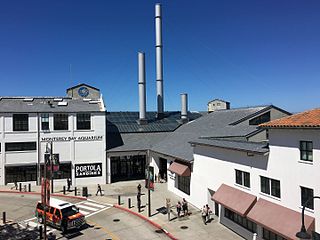
Monterey Bay Aquarium is a nonprofit public aquarium in Monterey, California. Known for its regional focus on the marine habitats of Monterey Bay, it was the first to exhibit a living kelp forest when it opened in October 1984. Its biologists have pioneered the animal husbandry of jellyfish and it was the first to successfully care for and display a great white shark. The organization's research and conservation efforts also focus on sea otters, various birds, and tunas. Seafood Watch, a sustainable seafood advisory list published by the aquarium beginning in 1999, has influenced the discussion surrounding sustainable seafood. They are the home of the current oldest living sea otter, Rosa.

The National Aquarium – also known as National Aquarium in Baltimore and formerly known as Baltimore Aquarium – is a non-profit public aquarium located at 501 East Pratt Street on Pier 3 in the Inner Harbor area of downtown Baltimore, Maryland in the United States. Constructed during a period of urban renewal in Baltimore, the aquarium opened on August 8, 1981. The aquarium has an annual attendance of 1.5 million visitors and is the largest tourism attraction in the State of Maryland. The aquarium holds more than 2,200,000 US gallons (8,300,000 L) of water, and has more than 17,000 specimens representing over 750 species. The National Aquarium's mission is to inspire conservation of the world's aquatic treasures. The aquarium's stated vision is to confront pressing issues facing global aquatic habitats through pioneering science, conservation, and educational programming.

The Association of Zoos and Aquariums (AZA), originally the American Association of Zoological Parks and Aquariums, is an American 501(c)(3) nonprofit organization founded in 1924 and dedicated to the advancement of zoos and public aquariums in the areas of conservation, education, science, and recreation. AZA is headquartered in Silver Spring, Maryland, United States, and accredits zoos. There were 238 accredited facilities as of 2019, primarily in the US, and also a handful in eleven other countries.
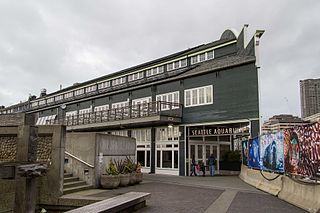
The Seattle Aquarium is a public aquarium in Seattle, Washington, United States, located on Pier 59 on the Elliott Bay waterfront. It opened in 1977 and has been accredited by the Association of Zoos and Aquariums (AZA).

The Sacramento–San Joaquin River Delta, or California Delta, is an expansive inland river delta and estuary in Northern California. The Delta is formed at the western edge of the Central Valley by the confluence of the Sacramento and San Joaquin rivers and lies just east of where the rivers enter Suisun Bay, which flows into San Francisco Bay, then the Pacific Ocean via San Pablo Bay. The Delta is recognized for protection by the California Bays and Estuaries Policy. Sacramento–San Joaquin Delta was designated a National Heritage Area on March 12, 2019. The city of Stockton is located on the San Joaquin River at the eastern edge of the delta. The total area of the Delta, including both land and water, is about 1,100 square miles (2,800 km2). Its population is around 500,000.

The Riverbanks Zoo and Garden is a 170-acre (69 ha) zoo, aquarium, and botanical garden located along the Saluda River in Columbia, South Carolina, United States. A small portion of the zoo extends into the nearby city of West Columbia. It is operated by the Rich-Lex Riverbanks Park Special Purpose District, a partnership of the city of Columbia and Richland and Lexington counties. It is overseen by the Riverbanks Park Commission, comprising two members each from the three governments and one at-large member.

The Aquarium of the Pacific is a public aquarium on a 5-acre (20,000 m2) site on Rainbow Harbor in Long Beach, California, United States. It is situated across the water from the Long Beach Convention Center, Shoreline Village, and the Queen Mary Hotel and Attraction.

Pier 39 is a shopping center and popular tourist attraction built on a pier in San Francisco, California. At Pier 39, there are shops, restaurants, a video arcade, street performances, the Aquarium of the Bay, virtual 3D rides, and views of California sea lions hauled out on docks on Pier 39's marina. A two-story carousel is one of the pier's more dominant features, although it is not directly visible from the street and sits towards the end of the pier. The family-oriented entertainment and presence of marine mammals make this a popular tourist location for families with kids.
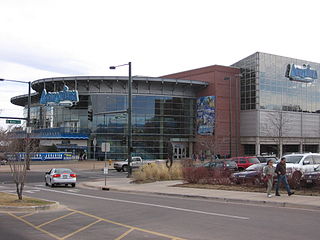
Downtown Aquarium is a public aquarium and restaurant located in Denver, Colorado at the intersection of I-25 and 23rd Ave. The 107,000 square feet (9,900 m2) main building sits on a 17-acre (6.9 ha) site adjacent to the South Platte River. Its freshwater and marine aquaria total approximately 1,000,000 US gallons (3,785,000 L), and exhibit a variety of fish and other animals.

SeaWorld San Antonio is a 250-acre (100 ha) marine mammal park, oceanarium and animal theme park in the Westover Hills District of San Antonio, Texas, on the city's west side. It is the largest of the three parks in the SeaWorld chain owned and operated by SeaWorld Parks & Entertainment and one of the world's largest marine-life theme parks focused on conservation, education and animal rescue. It is a member of the Alliance of Marine Mammal Parks and Aquariums (AMMPA) and is accredited by the Association of Zoos and Aquariums (AZA).
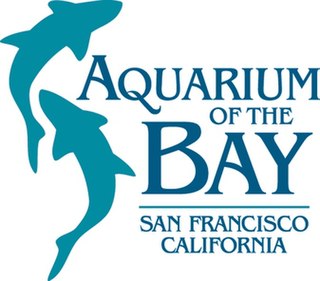
Aquarium of the Bay is a public aquarium located at The Embarcadero and Beach Street, at the edge of Pier 39 in San Francisco, California. The aquarium is focused on local aquatic animals from the San Francisco Bay and neighboring rivers and watersheds as far as the Sierra Mountains. Since 2005 the Aquarium has focused its mission on enabling ocean conservation and climate action both locally and globally. It is one of seven institutions under parent company Bay Ecotarium, the largest watershed conservation organization in the Bay Area

The CALFED Bay-Delta Program, also known as CALFED, is a department within the government of California, administered under the California Resources Agency. The department acts as consortium, coordinating the activities and interests of the state government of California and the U.S. federal government to focus on interrelated water problems in the state’s Sacramento-San Joaquin River Delta. The coordination program was created in 1994 by Governor Pete Wilson and federal Interior Secretary Bruce Babbitt following a decade of chaotic disputes between the state of California, the federal government, environmental groups, agricultural interests, and municipal water services.

San Diego Zoo Wildlife Alliance is a not-for-profit organization headquartered in San Diego that operates the San Diego Zoo and the San Diego Zoo Safari Park. Founded in 1916 as the Zoological Society of San Diego under the leadership of Harry M. Wegeforth, the organization claims the largest zoological society membership in the world, with more than 250,000 member households and 130,000 child memberships, representing more than half a million people. The organization's mission is to save species worldwide by uniting their expertise in animal care and conservation science with their dedication to inspiring passion for nature. The San Diego Zoo and San Diego Zoo Safari Park feature a combined 15,000 animals of 750 species, not all of which are displayed publicly.
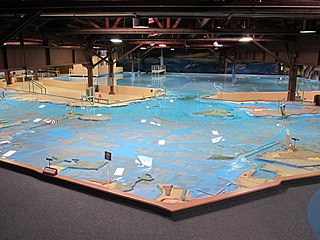
The U.S. Army Corps of Engineers Bay Model is a working hydraulic scale model of the San Francisco Bay and Sacramento-San Joaquin River Delta System. While the Bay Model is still operational, it is no longer used for scientific research but is instead open to the public alongside educational exhibits about Bay hydrology. The model is located in the Bay Model Visitor Center at 2100 Bridgeway Blvd. in Sausalito, California.
The Water Education Foundation is a nonprofit organization whose goal is to provide unbiased, balanced information on water issues in California and the Southwestern United States.
The Bay Institute(TBI) is a nonprofit research, education, and advocacy organization dedicated to protecting and restoring the ecosystem of the San Francisco Bay, the Sacramento-San Joaquin Delta, and the estuary's tributary rivers, streams, and watersheds. Created in 1981, TBI's scientific experts have worked to secure stronger protections for endangered species and their habitats; improve water quality; reform how California manages its water resources; and promote comprehensive ecological restoration from the Sierra to the sea. They are based in Novato, California. Aquarium of the Bay in San Francisco is affiliated with them.
Big Break Regional Shoreline is a regional park in Oakley, Contra Costa County, northern California. It is a part of the East Bay Regional Park District system.
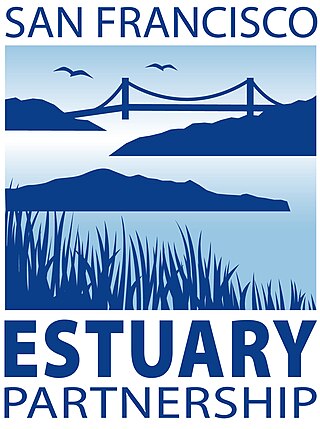
The San Francisco Estuary Partnership (Partnership) is one of the 28 National Estuary Programs created in the 1987 Amendments to the Clean Water Act. The Partnership is a non-regulatory federal-state-local collaboration working to restore water quality and manage the natural resources of the San Francisco Bay-Sacramento–San Joaquin River Delta estuary. The Partnership works with over 100 municipalities, non-profits, governmental agencies, and businesses and helps develop, find funding for, and implement over 40 projects and programs aimed at improving the health of the estuary. The partnership either directly implements these projects, or administers and manages grants, holds educational workshops and highlights project results. The Partnership is also the official representative for the San Francisco Bay region to the Most Beautiful Bays in the World.
California Water Fix and Eco Restore, formerly known as the Bay Delta Conservation Plan, is a $15 billion plan proposed by Governor Jerry Brown and the California Department of Water Resources to build two large, four-story tall tunnels to carry fresh water from the Sacramento River under the Sacramento-San Joaquin Delta toward the intake stations for the State Water Project and the Central Valley Project.

Restore the Delta is a campaign, based in Stockton, California that advocates for restoring the Sacramento-San Joaquin Delta also known as the San Francisco Bay-Delta Estuary. It began in 2006 working towards education and outreach to help Californians recognize the Delta as part of California's heritage. Currently, there are up to 40,000 members throughout California of both residents and various organizations working towards the same goal.














